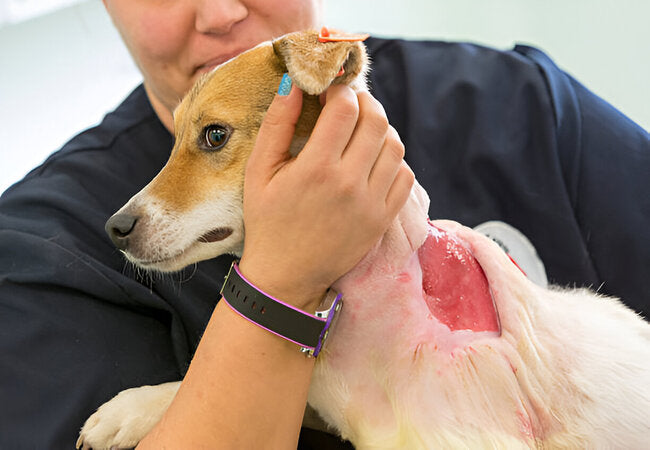Soft Tissue Sarcoma in Dogs: 2025 Vet-Approved Care Guide 🐕🩺

In this article
Soft Tissue Sarcoma in Dogs: What You Need to Know 🩺
By Dr. Duncan Houston BVSc
Hello—I’m Dr Duncan Houston BVSc, veterinarian and Ask A Vet founder. Soft tissue sarcoma (STS) is a type of cancer found in connective tissues, like muscle, fat, nerves, and blood vessels. Though they are uncommon, they’re significant because of their hidden spread. In this vet‑approved guide, discover:
- What STS is and how it’s graded
- Signs and symptoms depend on the tumor location
- How veterinarians diagnose and stage STS
- Treatment options: surgery, radiation, chemo, and more
- Prognosis and how to help your dog thrive
1. What Is Soft Tissue Sarcoma?
STS are malignant tumors arising from mesenchymal (connective) tissues, such as muscle, fat, nerves, blood vessels, tendon, or fascia. They can appear anywhere soft tissue exists, but are most common under the skin. They account for ~8–15% of skin/subcutaneous tumors in dogs.
2. Grading & Growth Behavior
STS tumors are graded I–III:
- Grade I (low): Slow-growing, rarely spreads
- Grade II (intermediate): moderate spread risk
- Grade III (high): Aggressive; 40–50% may metastasize.
Despite a firm lump, microscopic "tentacles" of cancer often extend beyond its edges, so wide excision is key.
3. Recognizing Symptoms
- 📌 A firm lump under the skin, sometimes painless, but growing
- 💔 Pain or lameness if the tumor is deep, like in muscle or nerve tissue
- 📣 Signs vary by location—abdominal tumors may cause vomiting or weight loss; oral masses cause difficulty eating or bad breath.
4. Diagnosis & Staging
- ✔️Fine-needle aspiration (FNA): initial, minimally invasive test.
- ✔️Biopsy & histopathology: confirms diagnosis and determines grade.
- ✔️Imaging for staging: chest X-rays, abdominal ultrasound, CT, or MRI to assess spread.
- ✔️Blood and urine tests: evaluate general health before treatment.
5. Treatment Options
5.1 Surgery
- Wide-margin excision is best, removing the tumor + healthy tissue around it.
- Success rates are high for Grade I–II recurrence in ~7–30% of cases; margins reduce risk.
5.2 Radiation Therapy
- Used if surgery left incomplete margins or the tumor is inoperable.
- Definitive protocols aim to eliminate residual disease; palliative treatments treat symptoms and slow growth.
5.3 Chemotherapy
- Generally for high-grade (III) or metastatic disease.
- Drugs include doxorubicin, cyclophosphamide; metronomic (low-dose) schedules may help.
- Emerging options like electrochemotherapy and targeted immunotherapy show potential.
6. Prognosis & Long‑Term Care
- Grade I–II with complete removal: good-to-excellent outlook; monitor for ~2 years post-treatment.
- Grade III: guarded—higher relapse and metastasis risk; combination treatment recommended.
- Regular check-ups, annual imaging, and prompt attention to new lumps are crucial.
📌 Final Thoughts from a Vet
Soft tissue sarcoma in dogs requires early detection, accurate diagnosis, and aggressive treatment. Wide-surgical margins offer the best chance for cure in lower-grade tumors. Radiation and chemo add protection when needed. With careful monitoring and supportive care, many dogs enjoy good quality of life post-treatment. 💛






